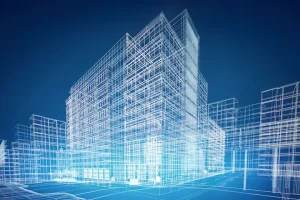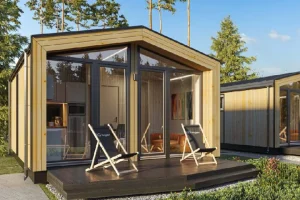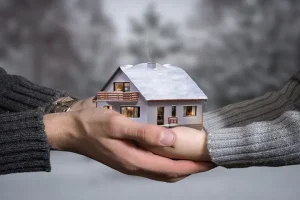With the growing population and the need for affordable and suitable homes, choosing new methods of building and designing homes has become very important. Two prominent approaches in this field are Tiny House and Green Building and House, which refer to small and sustainable homes and buildings using green technologies and environmentally friendly materials, respectively. Both of these concepts seek to reduce costs, optimize resource consumption, and improve the quality of life of people. Today, in this article, we are going to introduce and review Tiny House and Green Building House. Follow us until the end.
What is a Tiny House?
Tiny House is a new and innovative architectural style designed with the aim of optimizing space, reducing costs and paying attention to the environment. These houses usually have an area of less than 37 square meters and, despite being small, offer all the amenities of a regular house. The design of these houses is such that the available spaces are used intelligently. For example, beds are placed in drawers or on the ceiling and tables can be folded. The use of renewable energy, such as solar panels, and water recycling systems is common in many of these houses. Tiny House has become a popular option for people looking for a simple and sustainable lifestyle due to its affordability and easy mobility.
One of the most important advantages of small houses is the significant reduction in construction, maintenance and energy costs. Due to their small area, these houses require fewer natural resources and help reduce negative environmental impacts. Additionally, the Tiny House lifestyle tends to focus more on the essentials and reduce the amount of extras. These homes are a great option for people who are looking for a minimalist, travel, and adventurous lifestyle. Tiny Houses are also used as second homes, vacation rentals, or even offices. The growing interest in this lifestyle reflects a shift in society’s outlook toward sustainable architecture and simpler lifestyles.


Building a Tiny House as a Prefabricated Home
Building a Tiny House as a prefabricated house is one of the best and fastest ways to create this type of house. Prefabricated houses are usually manufactured in a factory and then transported to the installation site. This method is very popular due to the reduction in construction time and additional costs.
Features of building a prefabricated Tiny House:
1. High speed of construction: Since all parts are manufactured and assembled in the factory, construction time is greatly reduced.
2. Customization: The design of a prefabricated Tiny House can be completely customized according to the needs and tastes of the customer, in terms of the number of rooms, type of material and internal facilities.
3. Easy transportation and installation: The prefabricated house is easily transported to the installation site and is ready to use in a short time. This feature is very useful for people looking to move or install a house in remote areas.
4. Use of lightweight and durable materials: In the construction of prefabricated houses, materials such as lightweight steel structures (LSF) or processed wood are usually used, which, in addition to reducing weight, are highly durable.
5. Environmentally friendly: The prefabricated construction process is fully consistent with sustainable architecture due to the reduction of construction waste and the optimal use of resources.
Using these structures, Tiny House becomes a more affordable and practical option for people who are looking for a small, portable, and yet equipped house.
Benefits of Tiny House
1. Affordable
One of the main advantages of Tiny House is its low cost of construction and maintenance. These houses have lower construction costs than traditional houses due to their smaller dimensions and the use of fewer raw materials. Also, energy consumption in these houses is greatly reduced because heating, cooling and lighting cover a smaller space. These features make Tiny House an ideal option for people who are looking to reduce living costs and focus on quality of life.
2. Helping to preserve the environment
Tiny Houses have a lower environmental impact due to the use of recyclable materials and sustainable energy systems, such as solar panels. The reduction in construction waste and energy consumption makes these homes a sustainable and environmentally friendly option. Also, the smaller space of these homes requires fewer natural resources to build and maintain, which results in less pressure on the environment.
3. Minimalist and simpler living
One of the most appealing benefits of a tiny house is that it promotes a minimalist lifestyle. People in these homes are usually forced to keep only the essentials, which helps reduce stress and increase focus on the important aspects of life. This lifestyle allows people to distance themselves from unnecessary clutter and dedicate more time to their hobbies, family, and personal interests.
4. Easy to carry and move
Many Tiny Houses are designed to be mobile and can be mounted on trailers or trucks. This feature allows these houses to be moved to any location. For those looking for an adventurous lifestyle or changing residences, Tiny Houses are a flexible and attractive option. This feature also helps reduce the costs associated with purchasing land and permanent construction.
5. Flexibility in design and use
Tiny Houses are adaptable to a variety of needs and tastes. They can be used as permanent homes, vacation homes, work offices, or even second homes in recreational areas. Their interior design is usually completely customized to ensure maximum space utilization. This flexibility makes Tiny Houses suitable for a wide range of uses and audiences.


Tiny House Applications
Using Tiny House for personal and family life: Tiny House is a good option when an individual or family is looking to simplify their life and reduce everyday expenses. These houses are very suitable for people who are interested in a minimalist lifestyle or want to reduce additional costs such as bills, repairs and maintenance. Also, for those who do not need a large space and want to focus on the main needs and enjoy the moments of life, Tiny House is an ideal choice. People who have a nature-oriented lifestyle and prefer to live in natural environments or rural areas can benefit from the portability and installation of these houses.
Using Tiny House for commercial or adventurous purposes: Tiny House is more suitable when used as a multipurpose space or commercial project. These houses can serve as tourist accommodations in pristine areas, small work offices, art studios or second homes on vacation. For those who are constantly on the go and looking for a mobile home with full amenities, Tiny House is an ideal choice. In addition, in emergencies or for temporary accommodation on construction projects, these prefabricated houses can be used as they can be quickly installed and put into operation.
What is Green Building and House?
Green Building refers to structures that are designed and built with the aim of reducing negative impacts on the environment, optimizing energy consumption and improving the quality of life of residents. These buildings use environmentally friendly materials, modern technologies and sustainable systems such as solar energy, water recycling and waste reduction. Green buildings are designed according to geographical and climatic location to make the most of natural resources such as sunlight and natural ventilation. The use of thermal insulation, low-energy glass and low-energy equipment in these types of buildings reduces energy consumption and maintenance costs.
Green House is a type of green building that is designed for people to live in and complies with all the principles of sustainability. These houses help reduce the carbon footprint and at the same time create a healthy and peaceful environment for residents. The use of non-toxic materials, indoor air purification systems and natural lighting improve the quality of life in these homes. In addition, green homes usually use intelligent energy management systems that allow residents to optimize their energy and resource consumption. Building a Green House not only helps protect the environment, but also serves as a long-term investment, as reducing energy costs and increasing property value are key benefits.


Systems available in Green Building and House
1. Solar energy systems
One of the most important systems used in green buildings and homes is solar energy systems. These systems include solar panels that convert sunlight into electrical energy, reducing the need to use non-renewable energy sources. The energy produced can be used to provide electricity, heating or hot water for consumption. In addition to reducing energy costs, installing these systems helps reduce greenhouse gas emissions and is considered one of the main factors in environmental sustainability.
2. Water recycling and reuse systems
In Green Building, advanced systems are used to collect and recycle water. These systems include rainwater collection and treatment of gray wastewater (such as washing water) that can be used for watering plants, washing outdoor spaces and even reusing in bathrooms. In addition to reducing water consumption, using these systems saves fresh water resources and reduces water supply costs in the long run.
3. Smart heating, ventilation, and cooling systems
Green buildings use intelligent heating, ventilation, and cooling systems to optimize energy consumption. These systems, using advanced sensors and modern technologies, automatically adjust temperature and airflow to minimize energy consumption and maximize comfort for occupants. The use of natural ventilation and advanced insulation also complement these systems and help reduce the need for high-energy appliances.
4. LED lighting system and natural lighting
The lighting systems in the Green Building are designed based on natural lighting and energy-efficient LED lights. Large windows and skylights help maximize the use of natural light, and LED lights are used to provide artificial light with low energy consumption. This combination not only reduces electricity consumption, but also makes the interior space brighter and more pleasant, and has a positive effect on the health and morale of the residents.
5. Intelligent Building Management Systems (BMS)
In green buildings, the use of intelligent building management systems (BMS) is one of the key elements. These systems allow the monitoring and control of all building equipment, including energy consumption, ventilation, heating and lighting. Through this system, residents can manage the building’s performance in real time and maximize energy efficiency. This technology plays an important role in reducing costs and increasing the sustainability of green buildings.
6. Green roof and green wall systems
Another unique feature of green buildings is the green roof and green wall. By planting plants on the roof and walls of the building, these systems not only reduce the temperature of the building and save energy, but also help purify the air and reduce environmental pollution. These spaces also provide a beautiful and relaxing environment for residents and help absorb rainwater and reduce runoff.
7. Use sustainable and recycled materials
In Green Building, building materials are sourced from sustainable or recycled sources. These materials, such as recycled wood, recycled concrete, and natural insulation, not only help reduce construction waste, but also prevent the release of harmful chemicals and provide a healthier environment for residents. Choosing sustainable materials is a key step in reducing a building’s carbon footprint.
Benefits of Green Building and House
1. Reduce energy consumption and costs
One of the biggest benefits of Green Building and Green House is the significant reduction in energy consumption. The use of solar systems, low-energy equipment and modern thermal insulation optimizes energy consumption in these buildings. This reduction in energy consumption not only leads to savings in monthly costs, but also helps to preserve natural resources and reduce environmental pollution by reducing dependence on fossil fuels. This feature is very attractive to people who are looking to reduce living costs and protect the environment.
2. Conserving water resources and reducing its consumption
Green buildings and homes are equipped with advanced systems for water management and recycling. Collecting rainwater and using it for irrigation or washing, and recycling gray water (such as dishwashing water) are among the solutions that significantly reduce water consumption. These technologies not only help save water resources, but also reduce the costs associated with water supply. This advantage is very important in areas with a shortage of water resources.
3. Reducing environmental impacts and carbon footprint
Green Building helps reduce carbon footprints by using renewable energy and sustainable materials. These buildings minimize negative impacts on the environment by reducing greenhouse gas emissions and managing waste. At the same time, the use of green walls and roofs helps purify the air, absorb carbon dioxide, and reduce air pollution. These features make green buildings play an effective role in preserving natural ecosystems.
4. Improving the health and quality of life of residents
Green buildings provide a healthier and more pleasant environment for residents by using non-toxic and natural materials, proper ventilation systems, and natural lighting. Indoor air quality improves, and the reduction in the use of harmful chemicals in construction reduces the risk of respiratory diseases and allergies. In addition, the presence of plants on green roofs and walls creates a relaxing environment that reduces stress and improves the quality of life.


The impact of Tiny House and Green Building and House on costs
The impact of Tiny House on reducing construction costs: Due to its smaller dimensions, Tiny House requires fewer raw materials, which directly reduces construction costs. The use of intelligent design and lightweight materials such as processed wood or light steel structures (LSF) saves resources and construction time. In addition, many Tiny Houses are prefabricated, which greatly reduces the costs associated with labor and on-site construction operations. Also, due to the reduction in space required, the need to purchase large land is also eliminated, which is one of the largest costs of traditional construction.
The impact of Green Building and House on reducing construction and operating costs: Green buildings and houses greatly reduce long-term costs by using sustainable materials and modern technologies. Although some technologies, such as solar panels or water recycling systems, may have a higher initial cost, they can save significant amounts of energy and water in the long run. Also, the use of locally available and recycled materials in green buildings reduces the cost of materials. By being designed efficiently and reducing resource waste, these structures not only minimize construction costs but also maintenance and energy costs over time.
Final Words
As you can see, in this article, we introduced and reviewed Tiny House and Green Building and House. We learned that using Tiny House and Green Building and House not only helps reduce construction costs, but also helps preserve natural resources and improve the quality of the environment. Small houses with optimal design and use of lightweight materials can reduce construction and maintenance costs and at the same time provide high flexibility at the installation site. On the other hand, green buildings have positive effects on the environment by using sustainable technologies, such as solar energy systems, water recycling and the use of recycled materials, and minimize long-term energy consumption costs. We thank you for your support until the end of this article, and we hope that the information provided has been useful to you.
Ohaddeco Group specializes in the design and implementation of various KIT HOUSE using LSF structures and using green architectural techniques. Our collection is also ready to provide various types of interior coverings such as wooden acoustic wall covering and wooden thermowall. Dear friends, you can contact us through communication bridges for more information and free consultation.




